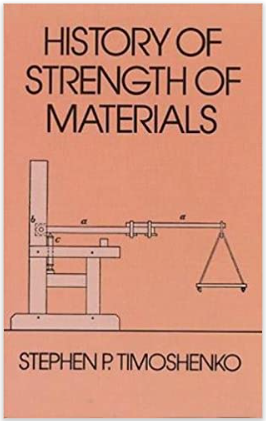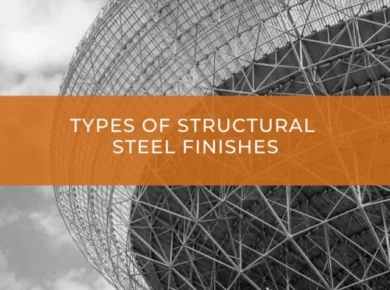These publications are a constant source of reference. Loaded with helpful information and a unique approach to problem-solving, they should be on every Civil/Mechanical engineer’s bookshelf.
Steelexplained.com participates in the AliExpress Portals Affiliate Program, so some external links on this page are from affiliates. Any purchase after clicking a link will result in a small monetary referral fee paid to Steelexplained.com at no cost to you. We really appreciate your support which allows us to continue running our website about steel structures and everything related.
1. Structural Design Of Steelwork – by Lawrence Martin and John Purkiss

For civil and structural engineering students, technicians, and professionals, this is a thorough introduction to designing to the new Eurocode specification. It uses worked examples to address Eurocode 3 on steel and Eurocode 4 on composite structures, and it gives an introduction to principles as well as practical compliance assistance. The book includes some minor errors and lacks a clear definition of the variables being discussed, but it’s possible to work your way past these little problems efficiently. All in all, well worth buying.
2. Architectural Design In Steel – by Peter Trebilcock and Mark Lawson

Steelwork allows for architectural expression while also being a structurally flexible and adaptable material. Detailing is essential because it affects structural performance, costs, buildability, and, perhaps most importantly, aesthetics. While the selection of structural form is frequently left to the structural engineer, architects should have a thorough understanding of the elements that influence the structure’s and its details choices. The majority of connection details have traditionally been the job of the steelwork fabricator, but with exposed steelwork, detailing is considerably more important to the architect since it affects the aesthetics of the structure. In this regard, designers must be aware of the overall production and erection procedures, which can significantly impact the method and approach to detailing modern steelwork in structures.
3. Cold-Formed Steel Design – by Wei-Wen Yu

This book, hailed as the standard guide on the design of cold-formed steel by specialists worldwide, contains explanations of the construction and structural behavior of cold-formed steel members and connections from both theoretical and experimental perspectives. This all-new fifth edition provides readers with a better understanding of the analysis and design of the thin-walled, cold-formed steel structures that have become popular in building construction and other areas in recent years.
4. Forensic Structural Engineering Handbook – by Robert T.Ratay

This book is the most comprehensive and up-to-date resource on Forensic Structural Engineering available. This definitive guide, which has been thoroughly updated and includes contributions from top specialists, provides a complete overview of forensic structural engineering and expert witness delivery. From investigating and studying failures to collaborating with the legal profession to assign duties, Forensic Structural Engineering Handbook, Second Edition covers every essential issue in the discipline.
5. Cable Structures – by Max Irvine

This is a one-of-a-kind book covering a topic barely discussed in other engineering publications. The book is particularly accessible due to the author’s historical perspective and references to real-world examples. Cable structures are becoming more common as traditional materials grow scarce and construction costs increase. Because such structures can span long distances and cover significant areas with minimal material weight, they are structurally efficient and cost-effective in almost every application. Furthermore, cable constructions have a natural line beauty and a beautiful lightness of aspect.
6. Bridge Launching – by Marco Rosignoli

This book is about bridges built with incremental launching technologies and prestressed composite materials. It incorporates construction techniques, static, aesthetic, and economic characteristics for this kind of construction.
Bridge launching is a comprehensive manual that covers both theoretical and technological aspects of the construction process. Both beam bridges and arch bridges are carefully examined, and unique theories focused on optimizing static and local phenomena are proposed.
7. History Of Strength Of Materials – by Stephen P.Timoshenko

This outstanding historical study of material strength, with many references to elasticity and structural theories, is based on the author’s extended series of lectures. Timoshenko looks into the discipline’s early beginnings, from ancient Egypt’s magnificent monuments and pyramids through the temples, roads, and fortifications of ancient Greece and Rome. From the seventeenth through the twentieth centuries, the author traces the growth and development of fledgling science and its industrial and commercial uses.
8. Strength Of Materials Vol 1 & Vol 2 – by Stephen P.Timoshenko

In these two volumes, Pr. Timoshenko explained all you have to know about mechanical problems. Part 1, Elementary Theory and Problems, contains the essential material usually covered in required courses of the strength of materials in the engineering schools.
In the 2nd volume, the author gives a very understandable demonstration of the resolution of all kinds of mechanical problems. Moreover, you can find these demonstrations in more detail for numerous configuration types, dependent on the design of your construction. And the point which is essential for each engineer is that Pr. Timoshenko gave graphs and abacus to resolve from the most straightforward manner all these kinds of problems demonstrated before.
These two volumes are a constant source of reference. Loaded with helpful information and Timoshenko’s unique approach to problem-solving, Strength of Materials should be on every Civil/Mechanical engineer’s bookshelf.
9. The Green Books

These publications are primarily focused on two groups of people: structural steelwork connection designers and detailers. Both need a thorough understanding of how connections are formed, how they function, and how to distinguish between good and bad practices.
“Green Books” series provides guidance for nominally pinned joints as well as for moment resisting joints following Eurocode 3 Design of steel structures, as implemented by its UK National Annexes.
They have been both produced by the SCI/BCSA Connections Group.
10. All books by the ECCS – European Convention for Constructional Steelwork

- Design of Steel Structures
- Fatigue Design of Steel and Composite Structures
- Design of Plated Structures
- Fire Design of Steel Structures – Check our guide for fire design
- Design of Steel Structures for Buildings in Seismic Areas
- Design of Joints in Steel and Composite Structures
- Design of Cold-formed Steel Structures
These books are all you need if you want to get familiar with the Eurocode principles. The ECCS organization brings together every aspect of the building codes, with numerous worked examples throughout all books. You will learn about the fundamental design concepts for steel structures in building constructions as well as more complex ones, like fatigue design of steel and composite structures. Following a discussion of the design basis, including the limit state approach, the material standards and their application are described in detail. The principles of structural analysis and modeling are provided, followed by design criteria and methodologies for various types of structural members. Mechanical fasteners, welded connections, simple joints, moment-resisting joints, and lattice girder joints are also considered.
*Bonus – Euclid’s Elements Of Geometry

Euclid’s Elements is by far the most famous ancient antiquity mathematical work and the world’s oldest continually used mathematical textbook. The majority of the theorems in the Elements were found by previous Greek mathematicians such as Pythagoras, Hippocrates of Chios, Theaetetus of Athens, and Eudoxus of Cnidos rather than by Euclid himself. However, Euclid is widely credited with arranging these theorems logically in order to demonstrate that they must come from five fundamental axioms. Euclid is also credited with providing some highly inventive proofs of previously known theorems.
If you read something you liked on our website, or we helped you with an issue, consider buying us a coffee!



